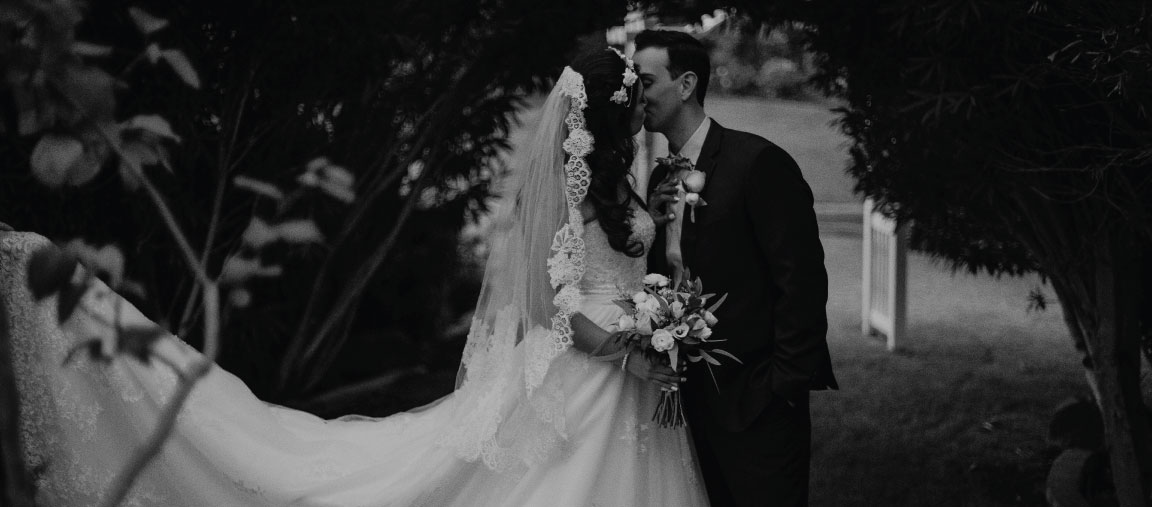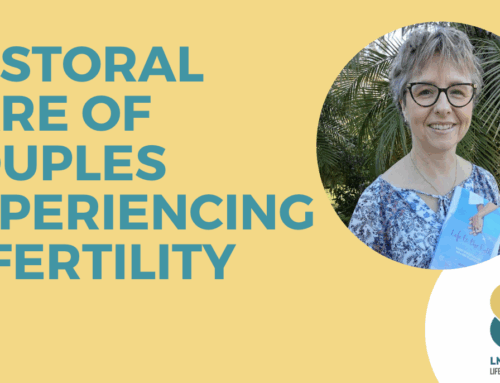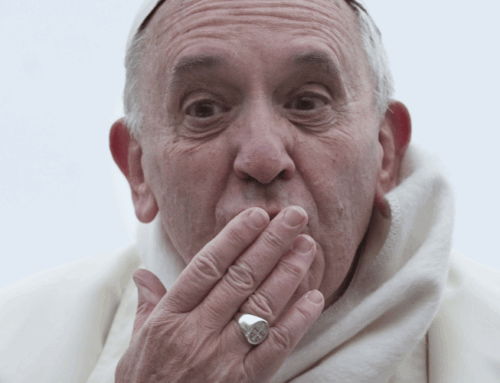Despite a decline in the number of Catholic weddings in many developed countries, Catholic Marriage has enjoyed unprecedented attention in the Church. A regular theme in the homilies and speeches of Pope Francis, throughout the world and in Australia, marriage educators, couples, priests and bishops are calling for a renewed emphasis on preparing, enriching and empowering Catholics to live joyful, faith-filled marriages.
Some Comments on the Decline of Catholic Weddings
In the past two decades, Catholic Weddings in Australia have declined around 60%. Over the same time period, the number of baptisms have been maintained, or declined only marginally, suggesting that the decline cannot be attributed wholly to a decline in the number of practicing Catholics.
The first question is why?
While the total number of weddings in Australia has increased slightly over the past twenty years (107,000 in 1997 to 113,00 in 2017), the crude marriage rate declined by 20% over the same period (5.8/1000 in 1997 to 4.6/1000 in 2017). This number includes both first and subsequent marriages. *
This is partly accounted for by the steady increase over the period of the median age at first marriage, most recently recorded as 30.4 for males and 28.8 for women (2017).* Additionally, there is an increasing number of Australians who never marry.
In other words, Australians are less ‘into’ marriage than previous generations. Commentary from our American and British colleagues suggest that the trend is not limited to Australia, but shared across many developed nations.
No doubt the social acceptance of cohabitation is partly responsible for this – after all, reason many, if we can live a ‘married life’ without formally being married, what’s the hurry? Or a wedding even necessary?
This kind of attitude reflects a shift in focus away from marriage itself to the wedding celebrations. Many people, Catholics included, equate marriage with the wedding. So, they really don’t think about entering a marriage as new identity and lifestyle much as they do about the details of the event.
Moreover, they have diminished the significance of the wedding event to a mere ‘rite of passage’– they humanise it and, in the process, de-sacralise it.
But a Catholic wedding is more than a party; it marks the transition to a vocational mission; a sacramental way of life where husband and wife become the spiritual leaders and ministers in their very own domestic church.
Getting married in the Catholic church is not just about the venue for exchanging vows – it’s about entering into a new identity and role as Catholics – a role that calls couples to witness to the nuptial relationship that Christ has with the Church. It’s a leadership role that is specific to their newly-formed couple identity.
People talk about the ‘crisis in vocations’ in the Church. We agree there is a crisis – but the problem is not in the priesthood or in religious vocations – or not primarily so. The real crisis is in the vocation of marriage. If we can get marriage right, a lot of other things will fall into place.
What to do about it?
So, the number of Catholic weddings has declined. We can analyse why all day long. The real question is: what are we doing about it?
One thing is clear; it’s not just about getting couples to have their weddings in a Catholic church – a kind of ‘tick the box’ approach to lifting the numbers. What is needed is a comprehensive response that works across the life cycle from childhood to mature couples.
The PMRC has been working on a number of strategies that directly address these challenges from a variety of angles:
1: National Leadership Formation
The Renaissance of Marriage Conference held every 18 months brings together the nation’s leaders to share ideas and encourage innovation in all areas of Marriage formation. Hosted in Sydney, it enjoys the support of Archbishop Fisher as well as many other bishops and archbishops from around the country.
In July, ROM19 will showcase a variety of initiatives from Australia and overseas in three focus areas: youth and schools, engaged and newlywed, enrichment and support of the married. Speakers include couples, school leaders, youth ministers, marriage educators, psychologists, theologians, fertility specialists, program authors, priests, one bishop, and three archbishops.
The conference provides important networking opportunities for those who are actively working to strengthen Catholic marriages across the life spectrum. This facilitates collaboration and fosters innovation.
2: Upping the standard for Marriage Preparation
SmartLoving – Engaged sets a new standard in marriage preparation that conforms with calls for a marriage catechumenate – that is, a period of formation rather than a single event.
When we look at the preparation that children undergo to prepare for their first communion, which includes multiple sessions over months, prayer and spiritual reflection, study of the relevant scriptures, confession as well as practice in the practical procedure for receiving and consuming the Eucharist, we recognise that such extended preparation is necessary. It reflects the gravity of what is about to take place in the child’s life.
Yet too often, preparation for receiving the Sacrament of Matrimony is diluted to a few short sessions with almost no spiritual formation or theological instruction. We need to remember that when we marry in the Catholic church we participate in a sacrament. It’s a very different reality to simply exchanging vows on a beach or at the registry.
Designed to be delivered from within the parish using online learning, SmartLoving Engaged utilises local parish couples who accompany the Engaged and provide wisdom and support. This sponsor model is presently being piloted in a number of parishes in Sydney and elsewhere in Australia.
A major advantage of this model is that it renews and enriches the marriages of the sponsors, while simultaneously supporting the engaged couples as they enter the newlywed years. The first five years are known to be the highest risk years for marriage breakdown, so community support is critical during this time.
It is also true, that many married couples, despite the longevity of their union, need and benefit from regular enrichment. If empty nesters are breaking up that’s a sure sign that simply staying married for 30 years is no guarantee that a couple will have entered fully into their vocational calling. Just as clergy need regular retreats and professional development, so also do married couples.
3: Missionary Couples
Missionary Couples is another project the PMRC is promoting. Requiring a year of formation and discernment, these Missionary Couples would be commissioned to work in their parishes and local communities to animate marriage and family initiatives and foster a marriage-affirming culture. Together with their parish priest, they would be responsible for building a parish marriage ministry that would include accompanying engaged couples, encouraging newlyweds and supporting parents and families under stress.
Missionary Couples thus become the workforce that implements and supports the mission of the Church, being a practical expression of the co–responsibility of laity with clergy.
4: Civil Marriage Project
PMRC is presently looking to launch a collaborative initiative to investigate the issues surrounding Catholics who have married civilly. There is an important opportunity when couples present their children for baptism, and at other times, to be invited into the fullness of God’s vision for their relationship.
Although it can be done simply by signing some papers with the parish priest, we advocate for using this opportunity to invite the couple to explore the full meaning of Catholic marriage, not just go through the formalities.
It sounds simple, but there are a number of complicating factors. One is the subtle art of determining whether a couple is eligible to marry in the Catholic church – we don’t want to be causing unnecessary hurt by having to un-invite couples who for a canonical reason are unable to marry.
Another factor is challenging the widespread belief that because they have been civilly married for a number of years, a preparation course is not necessary. If the course is only about teaching relationship skills, that may be the case.
However, Catholic marriage preparation should be about so much more than this. And in a way, it should be easier to focus on the sacramental formation explicitly in these civil marriages as clearly, the rationale for providing relationship education to the engaged as the primary or only focus, is rendered irrelevant.
That’s not to say that a civilly married couple wouldn’t benefit from relationship education – in fact, no matter the stage or strength of one’s marriage, relationship education delivers wonderful benefits to all couples when entered into openly.
5: Catholic Wedding Expo
Finally, for a number of years, we have been toying with the idea of a Catholic Wedding Expo – an unapologetically Catholic take on the secular versions which occur regularly in our capital cities. This one would feature not just wedding suppliers who happen to be Catholic, but workshops and displays that bring to life the rich array of Catholic culture.
The Expo would include things like the Marian and Saint meanings of flowers, an explanation of why we veil the bride (and the tabernacle, and first communicants), an opportunity for engaged couples to receive a betrothal blessing and go to Reconciliation, workshops on preparing the wedding liturgy, scripture studies on the common passages used in wedding ceremonies, workshops on preparing a speech with meaning, suggestions for meaningful ways to do kitchen tea, hens/bucks party, dance lessons that explores the theological references in movement as well as practical tips for making wedding decisions as a couple.
And we’re just getting started! The more we think about it, the more ideas come to mind of ways that Catholic traditions can be expressed through the wedding celebrations.
How would such an event help?
One way is by drawing the community together in a joyful celebration that extends beyond the immediate friends and family of the couple. So many couples who do have a Catholic wedding, have very little engagement with their parish community or other Catholics active in their faith.
Another is by presenting to the world at large, that Catholic Marriage has its own unique character that differs from secular marriage, one that calls couples to a specific mission. We need to celebrate and proclaim what makes us different rather than trying to fit in and avoid attention. That strategy never worked very well and it doesn’t work at all in the present age.
Final Thoughts
Some twenty–five years ago, we made a prediction that we, the Church, would soon be actively advertising Catholic Marriage the same way we do for vocations to priestly and religious life. That time has come.
We have entered an age where it is not enough to simply prepare couples that independently present themselves for Catholic marriage. We need to actively promote Catholic Marriage as an attractive alternative to secular marriage and cohabitation. Moreover, the preparation we provide needs to be lifted to a new level so that newlywed couples emerge with a passion to take up their vocational role in the Church.




